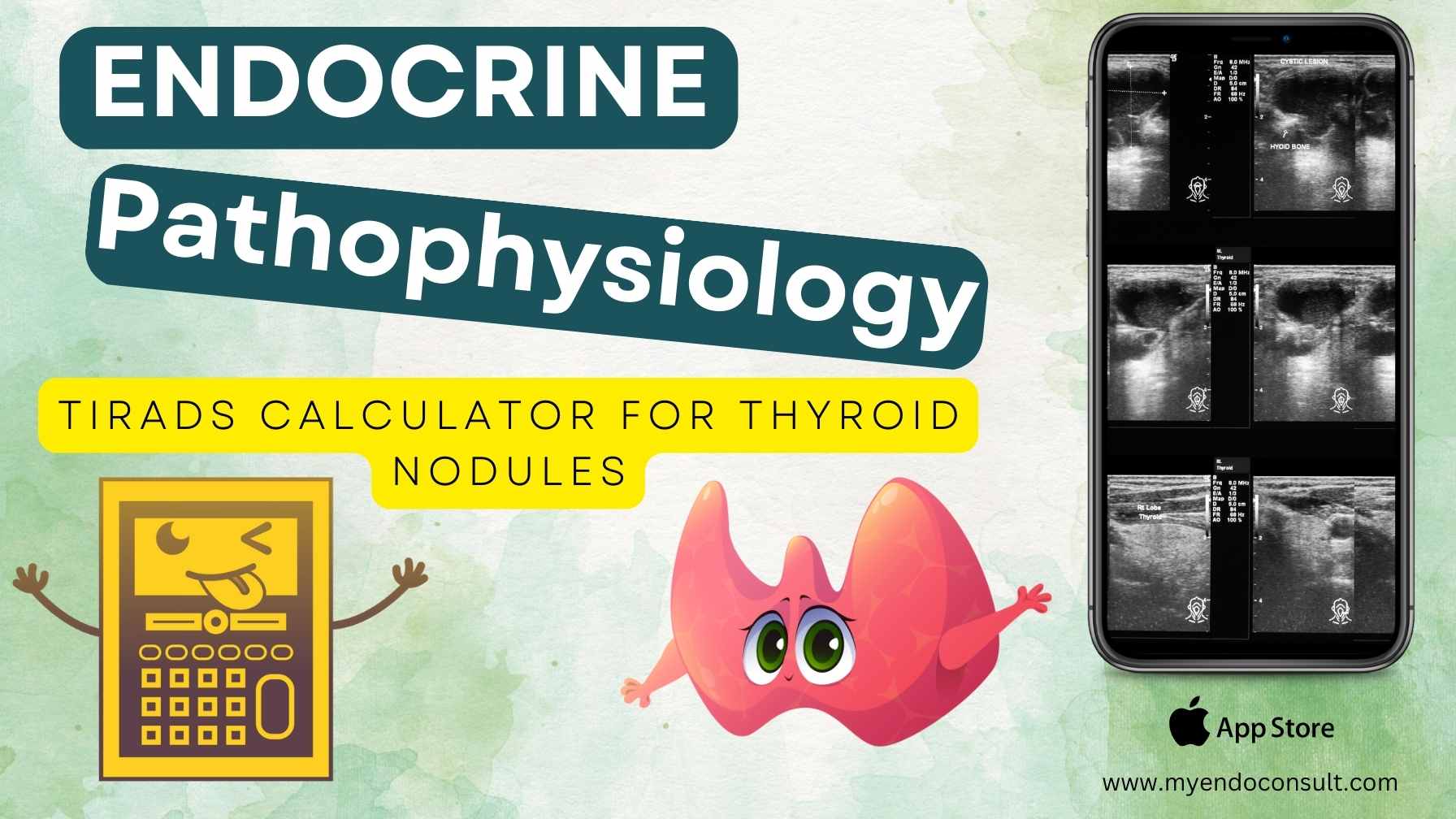
ACR-TIRADS Calculator
This is a free online calculator to estimate the risk of thyroid cancer (and the need for fine needle biopsy of thyroid nodules). It is based on the Thyroid Imaging Reporting and Data System (TI-RADS) endorsed by the American College of Radiology (ACR). The tool is intended for health care professionals only.
Enter relevant data on thyroid nodule composition, echogenicity, shape, margin and echogenic foci to generate the ACR-TIRADS level with associated recommendations.
Interpretation of results
TIRADS (TR) levels (total number of points):
- TR1 nodule is Benign (0 pts)
- TR2 nodule is Not Suspicious (2 pts)
- TR3 nodule is Mildly Suspicious (3 pts)
- TR4 nodule is Moderately Suspicious (4-6 pts)
- TR5 nodule is Highly Suspicious (≥7 pts)
TI-RADS Score Management Guidelines
| ACR TI-RADS Score | Malignancy Risk | Plan |
| 0 | TR1 – Benign | FNAB is not indicated |
| 1 – 2 | TR2 – Not suspicious | FNAB is not indicated |
| 3 | TR3 – Mildly Suspicious | FNA if ≥ 2.5 cm Follow if ≥ 1.5 cm |
| 4 – 6 | TR4 – Moderately Suspicious | FNA if ≥ 1.5 cm Follow if ≥ 1 cm |
| ≥ 7 | TR5 – Highly Suspicious | FNA if ≥ 1 cm Follow if ≥ 0.5 cm |
FNAB : Fine Needle Aspiration Biopsy
Limitations/Caveats
- A normal thyroid gland is brighter (hyperechoic) than the strap muscles (hypoechoic) on ultrasound. By comparing the brightness of the nodule to surrounding thyroid parenchyma, a thyroid nodule may be categorized as anechoic, hypoechoic, isoechoic, or hyperechoic.
- Anechoic, which correlates to 0 points on the ACR-TIRADS risk calculator, refers to a classic fluid-filled cyst. On the other hand, Very Hypoechoic is indicative of possible malignancy and refers to a nodule with an echogenicity lower than that of the overlying strap muscles.
- Classic pseudo-nodules seen in the setting of Hashimoto’s thyroiditis should not be classified as multiple hypoechoic and hyperechoic nodules. This background of multiple areas of variable echogenicity noted on thyroid ultrasound is sometimes referred to as Giraffe Skin Pattern. Furthermore, a uniform hyperechoic focus can be seen in a gland affected by Hashimoto’s thyroiditis. This is often described as a white knight nodule and is completely benign.
Reference(s)
Tessler FN, Middleton WD et al. ACR Thyroid Imaging, Reporting and Data System (TI-RADS): White Paper of the ACR TI-RADS Committee. J Am Coll Radiol. 2017 May;14(5):587-595.
Kindly Let Us Know If This Was helpful? Thank You!


